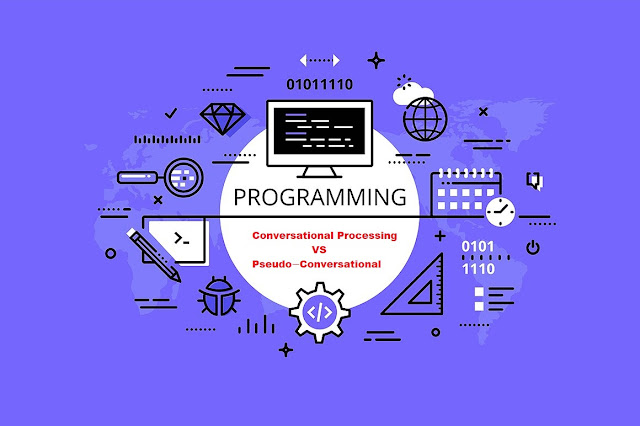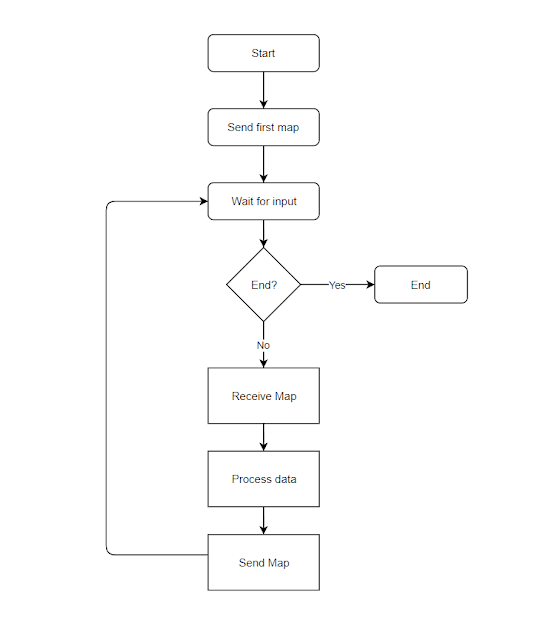 |
| Conversational Processing VS Pseudo−Conversational Programming. |
A conversational program is an online program that sits idle while it waits for user input. When a conversational program first starts, it sends its initial map to the terminal. Then, it enters into a loop where it waits for input, retrieves the input data from the terminal, processes the data, sends its output to the terminal, and waits again for example ATM machine application.
 |
| Conversational Program |
While a conversational program waits for user input, the task associated with that program remains in storage. Because of that, conversational programs are inefficient in terms of virtual storage usage.
Conversational programs are often the cause of a CICS condition known as short on storage or SOS.
A pseudo−conversational program requires a different type of design and logic than a conversational program because it must be able to figure out what to do each time it's restarted.
With pseudo−conversational programming, a program ends after it sends data to a terminal. This releases some of the resources that are used by the program. Then, CICS restarts the program when the user completes an entry and presses one of the terminal's attention identifier (AID) keys.
 |
| Pseudo−Conversational Programming. |
Unfortunately, pseudo−conversational programming is more difficult than conversational programming because each program must be coded so it can figure out what processing it should do each time it's started.
No comments:
Post a Comment